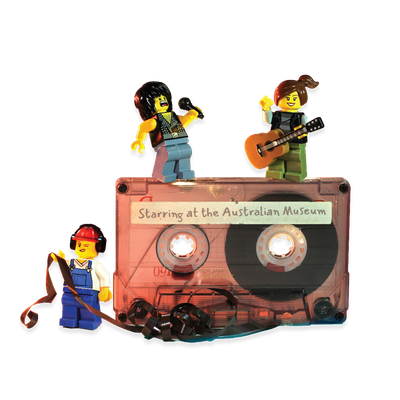Your search returned 109 results
By Page Type
By Tag
- All
- fish (966)
- blog (696)
- fishes of sydney harbour (401)
- First Nations (299)
- Blog (236)
- AMRI (169)
- archives (164)
- Eureka Prizes (146)
- Aboriginal and Torres Strait Islander (135)
- insect (126)
- Ichthyology (124)
- geoscience (109)
- minerals (102)
- climate change (99)
- podcast (94)
- Fish (91)
- Anthropology (89)
- International collections (80)
- Minerals Gallery (78)
- wildlife of sydney (78)
- Labridae (77)
- frog (74)
- gemstone (70)
- photography (66)
- history (64)
- Mollusca (60)
- gem (59)
- staff (59)
- Birds (56)
- Gems (56)
- Indonesia (56)
- education (56)
- shark (55)
- AMplify (54)
- people (53)
- earth sciences (50)
- exhibition (50)
- past exhibitions (50)
- Gobiidae (48)
- sustainability (46)
- Pomacentridae (45)
- Serranidae (44)
- lifelong learning (42)
- science (42)
- Earth and Environmental Science (41)
- Syngnathidae (41)
- Ancient Egypt (40)
- Bali (40)
- bird (40)
- dangerous australians (40)
-
Jasperised wood
https://australian.museum/learn/minerals/mineral-factsheets/jasperised-wood/This polished, richly hued slice of jasperised wood is from the Petrified Forest National Park, which covers parts of Navajo and Apache Counties in north- eastern Arizona, USA.
-
Manganite
https://australian.museum/learn/minerals/mineral-factsheets/manganite/Germany has produced some of the largest and best manganite (manganese hydroxide) crystals in the world, as shown by this superb example.
-
Celestine
https://australian.museum/learn/minerals/mineral-factsheets/celestine/This large hollow geode lined with sky blue celestine crystals was purchased from a Victorian mineral dealer.
-
Cuprite on Calcite
https://australian.museum/learn/minerals/mineral-factsheets/Cuprite-on-calcite/Emke Mine in Namibia has produced some very large cuprite (copper oxide) crystals, with some being of gem quality and able to be faceted into rare dark-red gemstones.
-
Gemstone accolades and museum outreach
https://australian.museum/learn/news/blog/gemstone-accolades-and-museum-outreach/Gemstones flash brightly for Australian Museum Geoscience activities at present.
-
A Cave Made to Order
https://australian.museum/learn/news/blog/amri-a-cave-made-to-order/The Australian Museum used to have its own richly-decorated limestone cave
-
Earthquakes and tsunamis
https://australian.museum/learn/news/blog/earthquakes-and-tsunamis/What causes earthquakes and why do tsunamis often follow a large earthquake?
-
History of the Minerals Department
https://australian.museum/about/history/people/history-of-the-minerals-department/The mineral collection is one of the oldest and largest collections in the country, housing many examples of early Australian mining.
-
Metamorphic processes
https://australian.museum/learn/minerals/shaping-earth/metamorphic-processes/Most minerals are only stable at particular temperatures and pressures, so changes in these result in the formation of new minerals.
-
Geological origin of gemstones
https://australian.museum/learn/minerals/gemstones/geological-origin-of-gemstones/Gemstones are formed below the Earth's surface and can sometimes show traces of other minerals, called inclusions.
-
Discover more
2025 Australian Geographic Nature Photographer of the Year
Special exhibition
Free entry
Now open -
Discover more
Unfinished Business
Special exhibition
Free entry
Now open -
Discover more
Wansolmoana
Permanent exhibition
Free entry
Open daily -
Find out more
Burra
Permanent kids learning space
Free entry
10am - 4.30pm![]()
-
Discover more
Minerals
Permanent exhibition
Free entry
Open daily![]()




